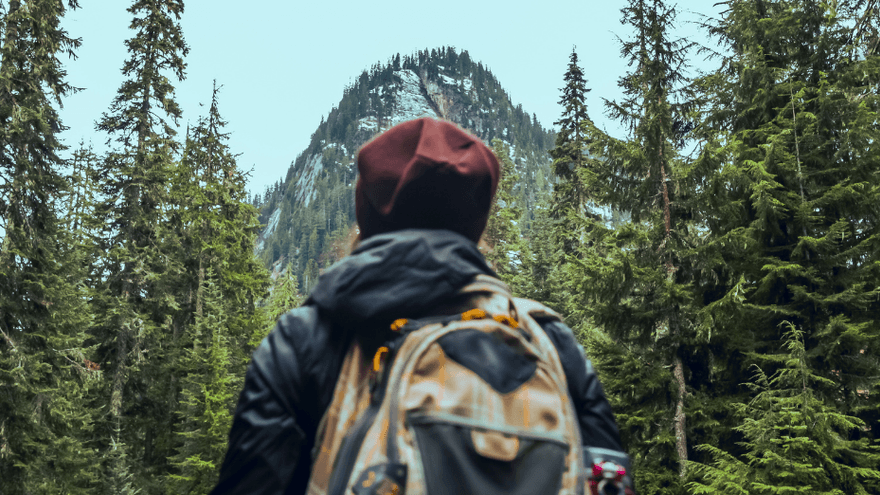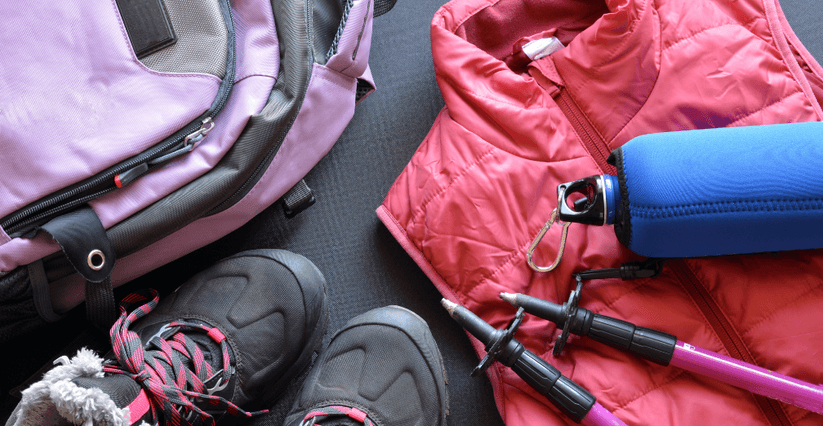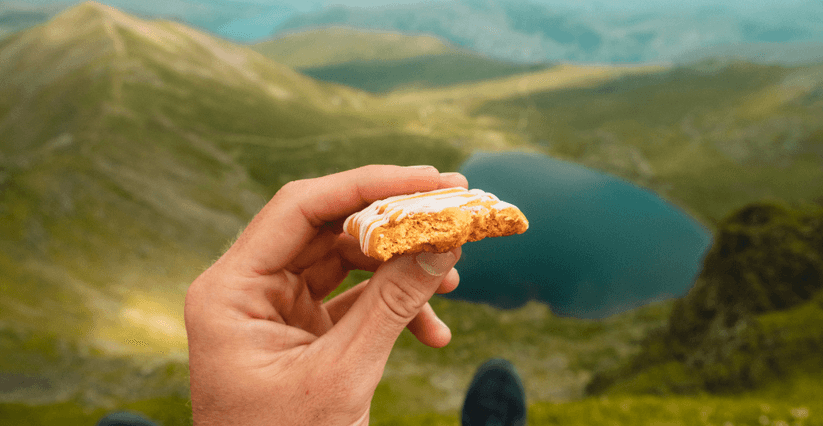11 July, 2022
If you're planning a day hike, you'll need to pack a rucksack with all the essentials. Here's a quick guide on what to include in your rucksack, as well as some tips on how to pack it efficiently.

Where do you start
It all starts with the weather forecast.
First, check the weather forecast and plan accordingly. Make sure you have enough clothing to keep you warm and dry, as well as sun protection if necessary. This will also determine what sort of snacks or drinks you bring too - a thermos with your favourite soup won't go amiss on those chilly hikes!
Clothing Layers
Always pack clothing in layers. This way you can easily take off or add layers as the temperature changes and remember, should you be hiking one of the UK's highest peaks like Snowdon in Wales, the temperature at the top will be much colder than at the bottom, so you'll need some extra warm layers even if it's hot at the bottom of the hill.
Clothing you should think about packing:
The base layer should be made of a material that wicks away sweat, such as Merino wool. These tops are great as they help to regulate body temperature, which is essential when you're hiking.
The mid layer is there to insulate you and keep you warm. A fleece is a good option as it's lightweight and can be easily packed away if you get too warm.
Your outer layer should be waterproof and breathable to protect you from the elements. A good quality Gore-Tex jacket is a worthwhile investment as it will last for years and is ideal for all types of outdoor activities, not just hiking.

Next up, think about your food and water. Depending on the length of your hike and the weather conditions, you'll need to pack enough food and water to keep you going throughout. Don't just pack for your picnic at the mid point of your hike. What if your hike is taking a lot longer than planned - lots of people on the trail, getting slightly lost, hillier than you expected.... packing extra energy snacks for the return route like nuts, seeds and fruit bars is always a good idea.
As for water, the general rule is to take 1 litre of water per person, per hour of walking in moderate conditions. If it's hot or you're exerting yourself more, you'll need to take even more. You could also think about rehydrate sachets or powder which you can add to your water bottle to help you stay hydrated.
Finally, here are a few other items you should consider packing in your rucksack:

The most essential piece of kit as without it, your pockets are going to be pretty full!
When it comes to rucksacks, the size you need will depend on the length of your hike and what you need to take with you.
For day hikes, a rucksack that's around 20 litres in capacity should be plenty. If you're planning an overnight hike or are carrying additional equipment like a Tent and Sleeping bag, you'll need a larger rucksack, around at least 35-40 litres.
If you're unsure about what size rucksack to go for, most outdoor equipment stores will have staff on hand who are experienced hikers and can help advise you on the best rucksack for your needs.
To get the right hiking rucksack fit, you 'll need to adjust the straps until the rucksack is sitting snugly on your back without being too tight.
The rucksack should sit comfortably on your hips and you shouldn't feel like it's pulling you backwards.
You may need to experiment with different rucksacks and sizes to find one that fits well and is comfortable to wear for long periods of time.
Look for a rucksack with plenty of easy access pockets too. You don't want to have to stop and search through your bag every time you want a snack or a quick drink of water.
Packing the right gear for your hike is essential to having a enjoyable and safe time.
Make sure you have the right rucksack to fit all your gear, as well as being comfortable to wear.
And finally, especially with the glorious weather we're having at the minute, don't forget the sunscreen!

Outside & Active is the home for those who love the outdoors. Our mission is to inspire, inform and educate people about being active outdoors in a fun, safe and sustainable way. We provide inspiration, kit, tech and advice on adventure, camping, climbing, cycling, hiking, running water and winter.
Most recent articles by Outside & Active

Brooks supports trail runners to defy limits and empower their trail runs with the new Cascadia 18. The adaptable Cascadia combines DNA Loft v2 cushioning with TrailTack Green grip and a durable upper mesh to handle all terrains, providing necessary comfort and underfoot security on each surface.

Connectivity makes eBiking more customised, convenient and secure.

Various app solutions, interfaces and services as the next step for the eBike experience of tomorrow
Most recent articles in HIKING

The Ramblers, Britain’s walking charity, bring their successful Out There Award to England, empowering 18-26 year olds to embrace the outdoors with confidence.

Looking for some motivation to get you excited and active for 2024? The Beacons Challenge, taking place on Saturday 6th July 2024, may well just be that rewarding opportunity you’ve been waiting for.

Exploring the great outdoors with your dog is a fantastic way to bond and keep both of you active. You can find suitable activities for any breed, whether splashing in the surf at the beach, trekking through scenic hiking trails, or scaling mountain peaks. Therefore, this article explores the best outdoor activities, providing tips and safety advice to ensure a fun and memorable experience.